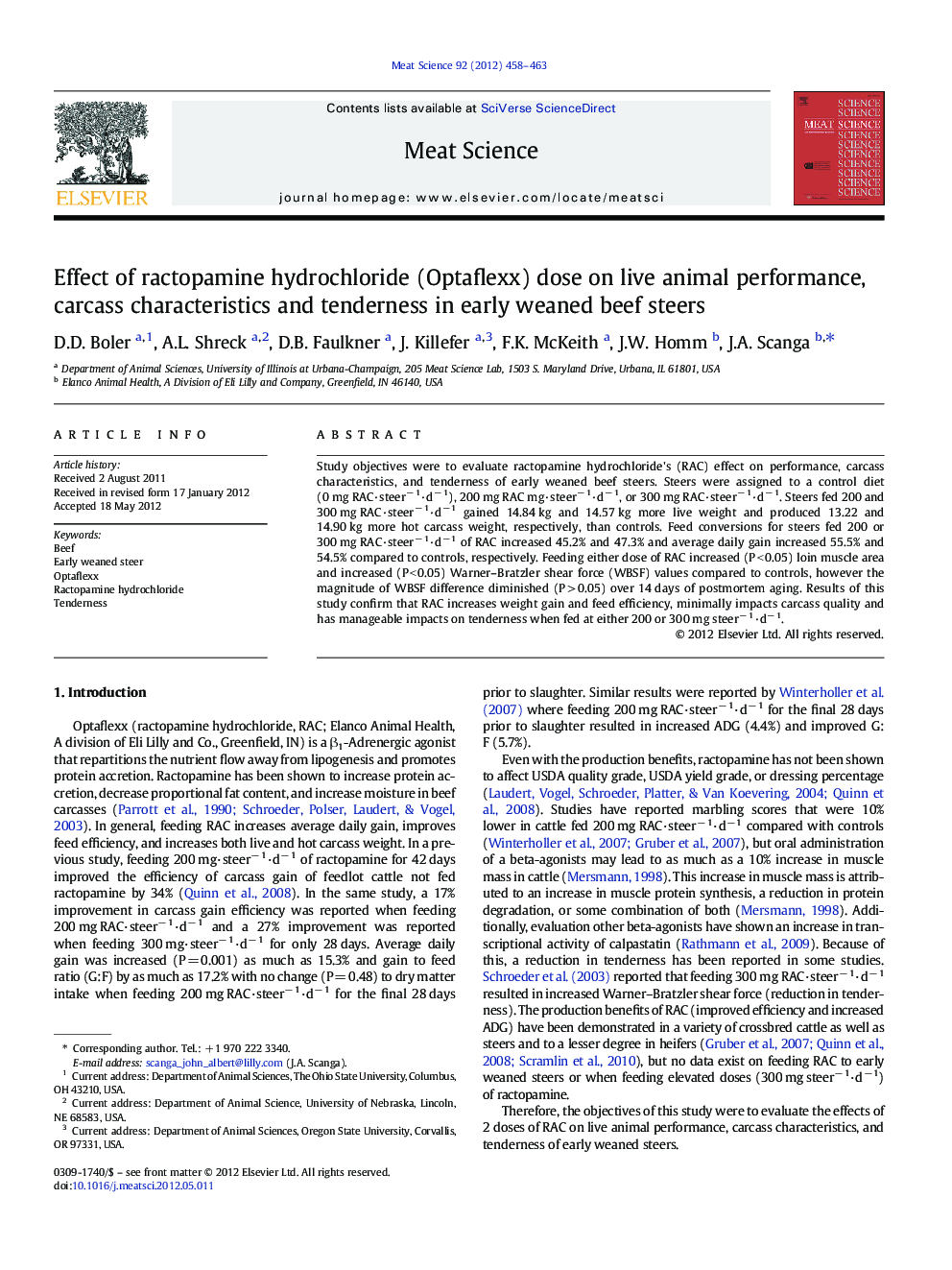| Article ID | Journal | Published Year | Pages | File Type |
|---|---|---|---|---|
| 5792000 | Meat Science | 2012 | 6 Pages |
Study objectives were to evaluate ractopamine hydrochloride's (RAC) effect on performance, carcass characteristics, and tenderness of early weaned beef steers. Steers were assigned to a control diet (0 mg RAC·steerâ 1·dâ 1), 200 mg RAC mg·steerâ 1·dâ 1, or 300 mg RAC·steerâ 1·dâ 1. Steers fed 200 and 300 mg RAC·steerâ 1·dâ 1 gained 14.84 kg and 14.57 kg more live weight and produced 13.22 and 14.90 kg more hot carcass weight, respectively, than controls. Feed conversions for steers fed 200 or 300 mg RAC·steerâ 1·dâ 1 of RAC increased 45.2% and 47.3% and average daily gain increased 55.5% and 54.5% compared to controls, respectively. Feeding either dose of RAC increased (P < 0.05) loin muscle area and increased (P < 0.05) Warner-Bratzler shear force (WBSF) values compared to controls, however the magnitude of WBSF difference diminished (P > 0.05) over 14 days of postmortem aging. Results of this study confirm that RAC increases weight gain and feed efficiency, minimally impacts carcass quality and has manageable impacts on tenderness when fed at either 200 or 300 mg steerâ 1·dâ 1.
⺠Optaflexx improved performance and carcass cutability of early weaned beef steers. ⺠Optaflexx did not influence marbling but increased REA in early weaned steers. ⺠Optaflexx did not change 12th rib fat thickness or calculated USDA yield grade.
